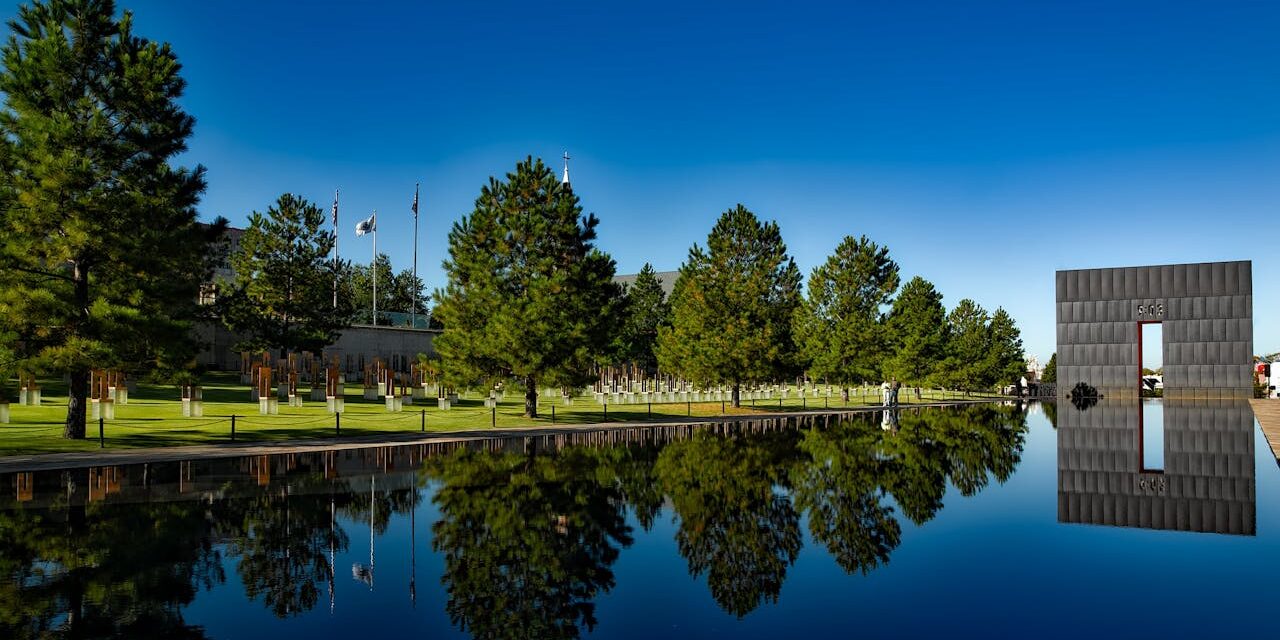Oklahoma, known as the “Sooner State,” has a rich and varied history shaped by its Native American heritage, European exploration, and significant events in American history.
From the early cultures of indigenous tribes to its modern developments, Oklahoma’s past is a fascinating story of resilience and growth.
Below, we explore the history of Oklahoma, highlighting its foundation, major historical events, and notable landmarks.
Table of Contents
Early History
Indigenous Inhabitants and European Exploration
Oklahoma was originally inhabited by various Native American tribes, including the Apache, Caddo, Comanche, Osage, and Wichita.
- These tribes developed complex societies with rich cultural traditions, agriculture, and trade networks.
- European exploration started to emerge and began in the 16th century with Spanish explorers such as Francisco Vázquez de Coronado, who traveled through the region in 1541. In 1682, René-Robert Cavelier, Sieur de La Salle, took and claimed the Mississippi River and its tributaries, including parts of Oklahoma, for France.
The indigenous peoples and early European explorers laid the groundwork for future settlements in Oklahoma.
Territorial Period and Settlement
Oklahoma became integrated and a part of the United States with the Louisiana Purchase in 1803. The area was initially part of the Louisiana Territory and later the Arkansas Territory.
- The Indian Removal Act of 1830 was what led to the forced relocation and movement of Native American tribes from the southeastern United States to what is now Oklahoma, known as the “Trail of Tears.”
- The Land Run of 1889 opened up unassigned lands to settlers, leading to a rush of white settlers and the establishment of new towns.
These events were crucial in shaping Oklahoma’s demographic and cultural landscape.
Key Historical Events
Statehood and Early Development
Oklahoma was admitted to the Union as the 46th state on November 16, 1907, combining the Oklahoma Territory and the Indian Territory.
- Early economic activities included agriculture and cattle ranching, which became central to the state’s economy.
Statehood marked a new era of political and economic growth for Oklahoma.
The Dust Bowl and Economic Hardships
In the 1930s, Oklahoma was severely impacted by the Dust Bowl, a series of severe and horrible dust storms that damaged and hurt the ecology and agriculture of the region.
- This environmental disaster led to mass migrations of Oklahomans, often referred to as “Okies,” to other states such as California.
The Dust Bowl significantly affected Oklahoma’s population and economy during this period.
Oil Boom and Industrial Growth
Oklahoma experienced a significant oil boom in the early 20th century, transforming its economy and leading to rapid industrial growth.
- Cities like Tulsa became known as “Oil Capital of the World,” attracting businesses and workers from across the nation.
The oil industry remains a vital part of Oklahoma’s economy today.
Notable Landmarks
Oklahoma City National Memorial
This memorial honors the victims, survivors, and rescuers of the Oklahoma City bombing that happened on April 19, 1995.
- The site includes the Field of Empty Chairs, the Survivor Tree, and the Reflecting Pool.
The Oklahoma City National Memorial is a poignant and stark reminder of resilience and community.
The State Capitol
Located in Oklahoma City, the state capitol is notable for its Greco-Roman architecture and oil wells on its grounds.
- The building houses the Oklahoma Legislature and the offices of the governor.
The state capitol is a symbol of Oklahoma’s government and history.
The Cherokee Heritage Center
This museum and cultural center in Tahlequah preserves the history and culture of the Cherokee Nation.
- It includes exhibits on the Trail of Tears, traditional Cherokee crafts, and historical reenactments.
The Cherokee Heritage Center highlights the rich Native American heritage of Oklahoma.
Governance
State Government
Oklahoma operates under a constitution adopted in 1907.
- The state government consists of the Executive, Legislative, and Judicial branches.
- The governor, currently Kevin Stitt, leads the executive branch.
The state government addresses the needs of Oklahoma’s diverse population and manages its resources effectively.
Local Government
Oklahoma’s local government structure includes counties, cities, and towns.
- Each level of government has specific responsibilities for services such as education, public safety, and infrastructure.
- Local governance ensures that the diverse needs of Oklahoma’s communities are met.
Effective local governance contributes to the overall well-being of the state’s residents.
Demographics and Growth
Population
As of 2023, Oklahoma’s population was approximately 4 million. The state’s demographic makeup reflects its history of Native American, Hispanic, African American, and Anglo influences.
Diverse demographics and steady growth reflect Oklahoma’s appeal as a place to live and work.
Education and Economy
Oklahoma is home to several prominent educational institutions, including the University of Oklahoma and Oklahoma State University.
- The state’s economy is diverse, with key sectors including energy, agriculture, manufacturing, and aviation.
- Oklahoma also has a growing technology and biomedical industry.
These factors contribute to the state’s economic resilience and cultural vibrancy.
State of Oklahoma Q&A
Q: When did Oklahoma become a state?
A: Oklahoma was admitted to the Union as the 46th state on November 16, 1907.
Q: Who were the original inhabitants of Oklahoma?
A: The original inhabitants of Oklahoma included various Native American tribes such as the Apache, Caddo, Comanche, Osage, and Wichita. These tribes had established societies with rich cultures and trade networks.
Q: What role did Oklahoma play during the Dust Bowl?
A: During the Dust Bowl of the 1930s, Oklahoma experienced severe dust storms that damaged agriculture and led to mass migrations of its residents, known as “Okies,” to other states like California.
Q: What are some notable historical landmarks in Oklahoma?
A: Notable landmarks include the Oklahoma City National Memorial, the State Capitol, and the Cherokee Heritage Center. These sites highlight Oklahoma’s history, government, and Native American heritage.
Q: How is Oklahoma governed?
A: Oklahoma operates under a constitution adopted in 1907, with an Executive, Legislative, and Judicial branch. The governor leads the executive branch, and local governance is managed by counties, cities, and towns.
Q: What is the current population of Oklahoma?
A: As of 2023, Oklahoma’s population was approximately 4 million. The state continues to attract residents with its diverse culture, educational opportunities, and economic resilience.
Oklahoma’s rich history and commitment to cultural preservation make it a unique and vibrant state. By protecting its historical landmarks and fostering growth across various industries, Oklahoma honors its past while looking forward to a prosperous future.





